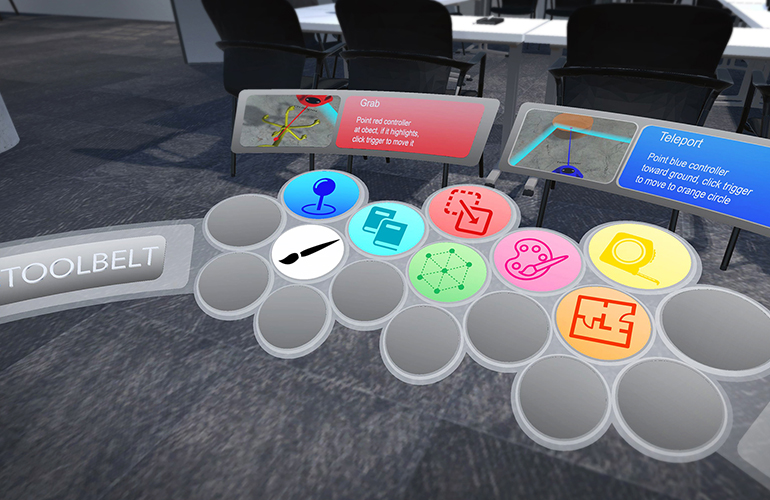The Future of Architecture Will Be Digital
From photo-real renderings to the proliferation of architecture-orientated social media accounts, digital tech has transformed the way designers envision the world and the way the world engages with design. With today’s tech, the sky’s the limit for what an architect or interior designer can imagine. One firm in particular has realized digital tech’s revolutionary potential and has ran with it, creating multiple new services that promise substantial ROIs and a more collaborative, expedited design process.

That firm is Mancini Duffy, a veteran powerhouse in the New York design scene. At a recent lunch and learn hosted at Interior Design’s New York City headquarters, Mancini Duffy principal Michael Kipfer and his team presented several digital services that are already impacting the physical world. “Over the last five years, we’ve really embraced a startup mentality in our R&D department,” explained Kipfer. “Our end-goal is to spread this tech to other firms and completely transform the way the way our kind of work is done in the future.”

Over the course of the hour-long lunch, Kipfer elaborated on the boundary-pushing services Mancini Design Lab has developed between when it opened in June 2018 and now. These include a 360-degree design session, aided by top-of-the-line augmented and virtual realities developed using a popular video game engine called UnrealUnity. Clients are invited to participate in the design process, speeding up the time it takes to get a final client sign-off down from a few weeks to a single three-hour collaborative session. In this way, Kipfer said, everyone’s time is respected. They most recently used this technology at Pier 17 for the ground floor public spaces and restaurants.

VR is also used in the Mancini Duffy’s Mancini:Tool Belt. Powered by the HTC Vive, designers can grab and move objects in a Rhino and Revit-created space, “paint” them with different finishes, measure them, and teleport freely through the proposed project, picking up on design flaws long before they have advanced to stage where they would be costly to fix. This tech was first developed when Boqueria’s owner Yann de Rockfort and Chief Executive Chef Marc Vidal approached the firm about designing a new kitchen for their staff. Today, it’s a standard tool embraced across Mancini Duffy’s project teams.

Mancini Duffy makes use of new tools outside of simulated realities, as well. They recently completed a parking study for a national financial client using drones to survey the number and flow of cars across a 157-acre site. What ordinarily would have taken a team of three humans a day to accomplish was completed by the drone in five minutes. Realizing this, the team used the drone to map the site twice an hour day for two days, taking in LIDAR data and importing it into a 3-D software. From this data, heat charts and flow diagrams were made available to the remote Mancini team, speeding up the process for the client and cutting down on the design team’s time wasted on travel.

So what’s next for the Design Lab? “On the whole, we foresee 2-D drawings and construction documents completely disappearing from the design process,” said Kipfer. That could be accomplished by licensing or trademarking the aforementioned services to be used by the wider architectural community. “We see a huge potential to make the design process more expedient, more collaborative, and ultimately more creative with what we’ve invented at Design Lab. It’s not about keeping it all to ourselves and outpacing the competition. It’s about creating a new competitive environment that stimulates better design and ultimately gives the end-user something better than they could have ever expected.”


